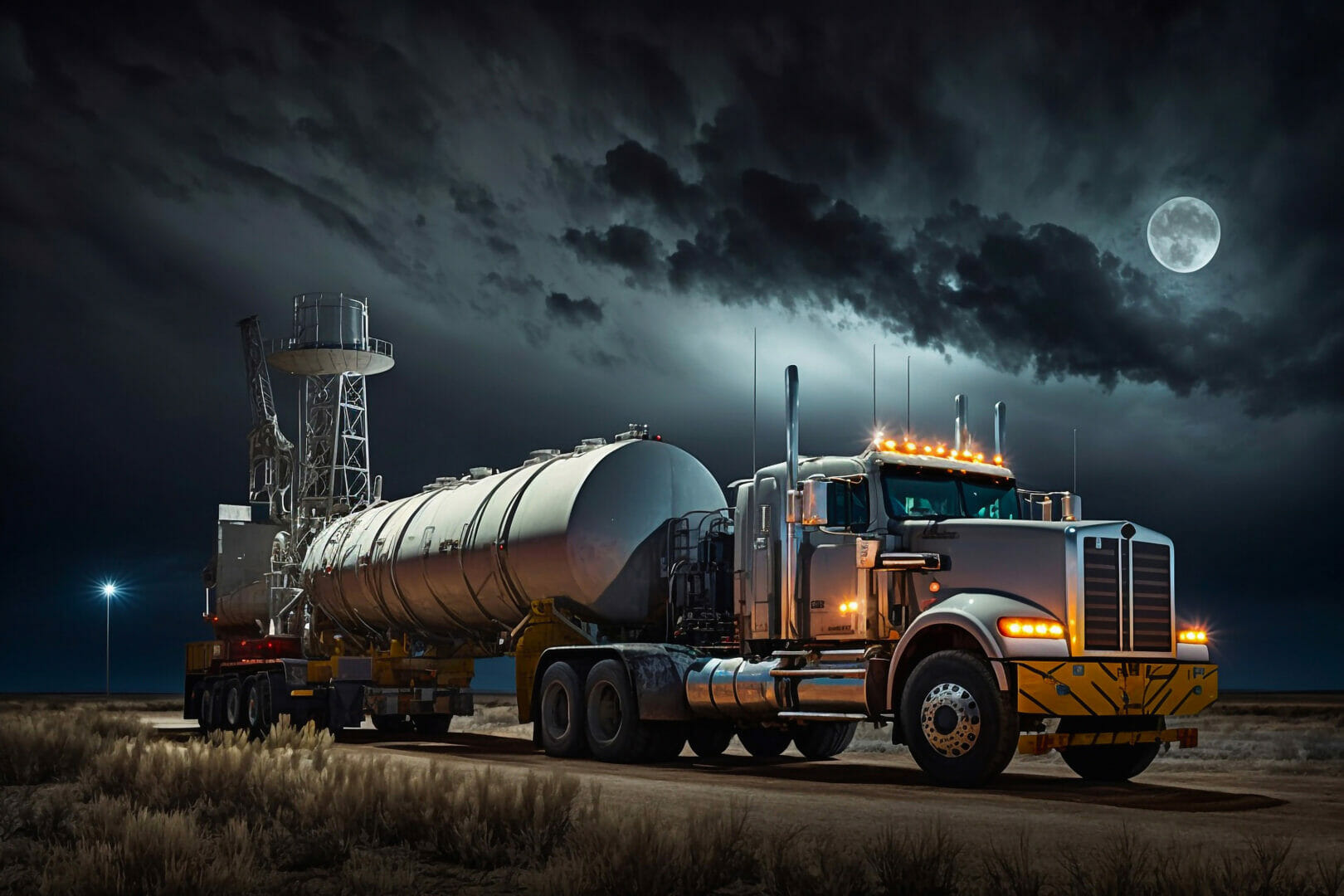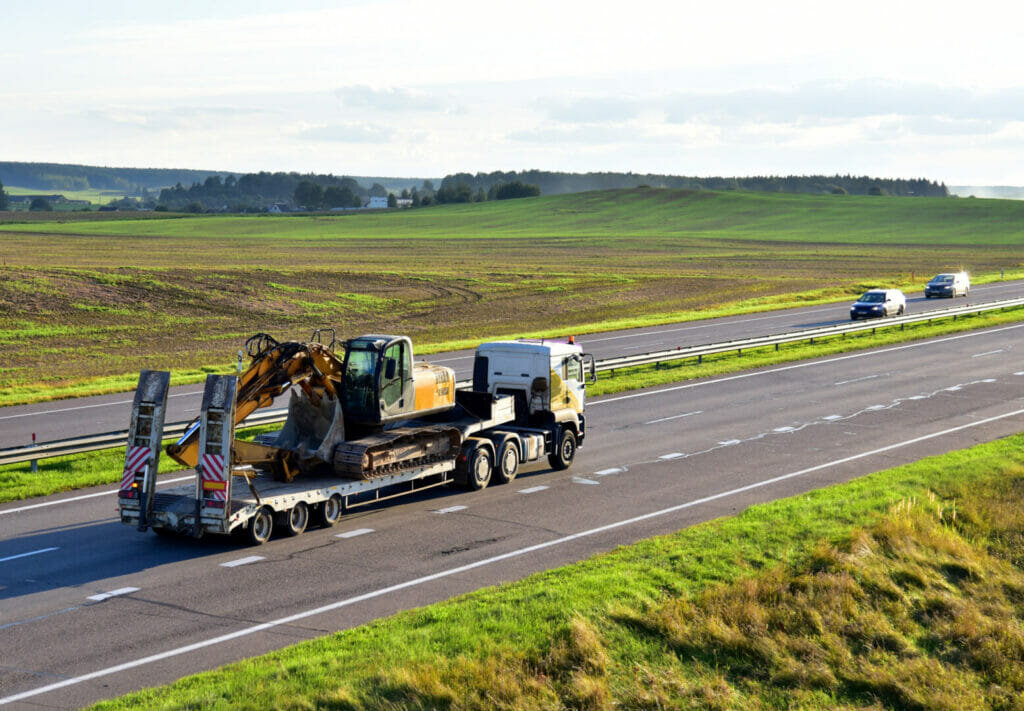
Heavy haul trucking, also known as oversized or overweight trucking, is a unique form of transportation. This sector moves extraordinarily large or heavy cargo that a standard commercial truck can’t handle.
Heavy haul trucks come equipped with specialized trailers and gear to carry oversized or overweight loads. These loads demand particular equipment, expertise, and knowledge for safe and efficient transport. Such loads may include heavy machinery, construction equipment, industrial materials, or oversized cargo requiring special permits and routing.
Industries like construction, oil and gas, mining, and renewable energy heavily depend on heavy haul trucking. In this guide, we delve into the realm of heavy haul trucking, discussing the types of equipment used, regulations, and safety practices.
Types Of Equipment Used In Heavy Haul Trucking
Heavy haul companies necessitate specialized equipment to ferry oversized loads. Here are some typical heavy-duty trucking apparatus:
- Lowboy Trailers
Lowboy trailers are frequently used in heavy haul trucking to carry oversized and overweight cargo. These trailers have a low deck height, enabling them to transport loads up to 12 feet tall.
They’re engineered to manage heavy loads with a weight capacity of up to 80,000 pounds. Lowboy trailers come in various sizes and configurations, such as fixed neck and detachable neck.
- Flatbed Trailers
Flatbed trailers move cargo that doesn’t need a low deck height. They’re often used to haul construction equipment like bulldozers, cranes, and excavators. Flatbed trailers come in different sizes and configurations, including step-deck and double-drop.
- Double-Drop Trailers
Double-drop trailers have a lower deck height than both flatbed and step-deck trailers. They’re designed to transport oversized and overweight cargo too tall for a lowboy trailer. Double-drop trailers can carry up to 45,000 pounds.
- Extendable Trailers
Extendable trailers are used for long and oversized cargo exceeding legal length limits. These trailers can stretch to accommodate longer loads and have a weight capacity of up to 60,000 pounds. They’re commonly used to transport items like wind turbine blades, pipes, and other lengthy cargo.
- Multi-Axle Trailers
Multi-axle trailers are designed to distribute the weight of heavy loads evenly across multiple axles. This reduces stress on individual axles and tires. These trailers can carry loads up to 120,000 pounds and are often used to transport heavy equipment such as cranes, transformers, and industrial machinery.
- Heavy-Duty Trucks
Heavy-duty trucks tow the various types of trailers used in heavy-haul trucking. These trucks can handle up to 80,000 pounds and are designed to manage the weight and size of oversized and overweight cargo. Heavy-duty trucks come in various configurations, including single axle, tandem axle, and tri-axle.

Regulations For Heavy Haul Trucking
Heavy haul trucking must adhere to stringent regulations to safeguard the driver, other drivers, and the transported load. Regulations vary by state and country, but some common regulations for heavy haul trucking include:
- Permits And Route Restrictions
Heavy haul trucking companies must acquire permits from the appropriate authorities before transporting an oversized load. These permits detail the load’s dimensions and weight, along with the route to follow. Route restrictions ensure safe transportation that doesn’t damage bridges, roads, or other infrastructure.
- Escort And Pilot Cars
Sometimes, heavy haul trucking companies must employ escort and pilot cars for safe oversized load transportation. These vehicles help alert other motorists to the large load, enhancing safety. Escort and pilot cars must have flashing lights, warning signs, and other safety equipment.
- Specialized Equipment
Heavy haul trucking requires specialized equipment to transport oversized loads. This includes trailers designed to handle the load’s weight and dimensions, along with specialized tie-downs and other equipment to secure the load. The heavy haul trucking company must ensure all equipment is in good working order and used lawfully.
- Weight And Dimension Limits
These limits are enforced to ensure oversized loads do not exceed road and infrastructure capacities. Heavy haul trucking companies must ensure their loads comply with the weight and dimension limits specified by the relevant authorities. Overloading a truck can damage roads, bridges, and other infrastructure, leading to fines and penalties.
- Driver Qualifications
Heavy haul trucking needs skilled and experienced drivers who can safely transport oversized loads. Drivers must be trained in safely handling large items, hold a commercial driver’s license (CDL), and comply with regulations related to service hours, rest periods, and other safety measures.
- Insurance Requirements
Heavy haul trucking companies must carry insurance coverage to protect against accidents, property damage, and other liabilities. Insurance requirements depend on the type of load transported and the regulations in the state or country where the load is transported.
Safety Practices For Heavy Haul Trucking
Heavy haul trucking inherently carries risks, making safety a paramount concern. Here are some safety practices that heavy haul trucking companies should adopt:
- Proper Loading And Securing Of Cargo
Ensuring cargo is correctly loaded and secured is the first safety practice for heavy haul trucking. This involves using suitable equipment, such as winches, straps, chains, and binders, to secure the load to the trailer. Proper loading and securing of cargo help keep the load in place during transportation, reducing the risk of accidents or damage.
- Regular Maintenance And Inspection Of Equipment
Another crucial safety practice is regular maintenance and inspection of equipment, including the truck, trailer, and load-securing equipment. Regular maintenance reduces the chances of equipment failure or breakdowns during transport and ensures that the equipment is in good working condition.
- Driver Training And Qualification
Heavy haul trucking requires skilled and experienced drivers who are trained and qualified to handle the challenges of transporting oversized or overweight loads. Drivers should understand the regulations and safety practices of heavy haul trucking and be capable of handling the equipment and cargo safely.
- Route Planning And Permits
Effective and safe transportation of large loads necessitates careful route planning. The route should consider the weight and size of the load, road height and width restrictions, and any potential obstacles or hazards.
- Compliance With Safety Regulations
Heavy haul trucking must comply with various safety regulations and standards designed to ensure the safety of the driver, equipment, and cargo. Compliance with these regulations helps prevent accidents, injuries, or environmental damage.
Conclusion
Operating in the heavy haul trucking sector demands specialized equipment, permits, and highly trained drivers experienced in handling large loads. Companies must also adhere to local, state, and federal laws controlling the size, weight, and transportation of oversized loads.
The route for transporting the load should be meticulously planned, taking into account any obstacles such as low bridges or overpasses, narrow roads, or steep grades. Heavy haul trucking can be quite expensive due to the specialized equipment required and the additional regulatory compliance costs.
